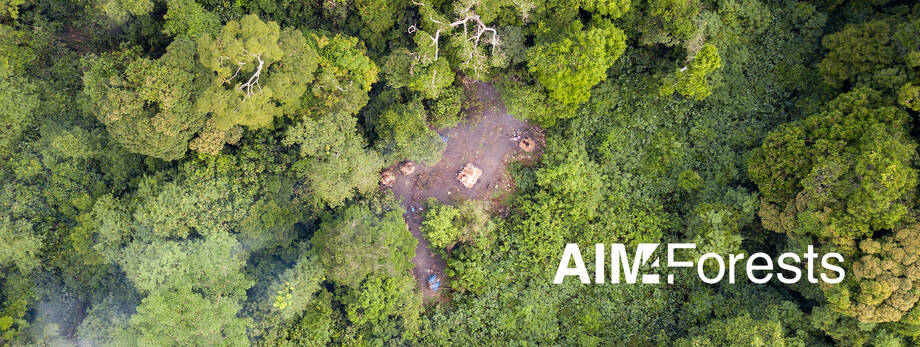AIM4Forests: Accelerating Innovative Monitoring for Forests
Reducing deforestation and forest degradation, restoring forests, and sustainably managing forests are all critical pathways to meeting the 2030 global goals.
Since 1990, more than 420 million hectares of forest have disappeared. Although deforestation rates have slowed, 10 million hectares of forest are still lost every year.
World leaders have committed to halting deforestation and restoring more than 1 billion hectares of degraded land. However, progress has been hindered due to the lack of information at various levels:
- those who are responsible for forests, who need accurate data to inform the right course of action to reduce deforestation, as well as implement plans for restoration and sustainable management;
- countries, which urgently need National Forest Monitoring Systems (NFMS) that are institutionalized in government institutions and that deliver high-quality data;
- government institutions, which must provide critical information for domestic forest-related priorities and policies, and emission reductions reporting through measurement, reporting and verification (MRV) processes in order to access climate finance and raise levels of ambition related to international commitments under the Paris Agreement; and
- Indigenous Peoples (IPs) and local communities, whose role in forest management and conservation is increasingly recognized – AIM4Forests will support efforts for IPs and local communities to monitor their forest areas and explore how their role as forest stewards can be further strengthened.
Those that are responsible for forests need accurate data and information to inform the right course of action.
In this regard, countries urgently need National Forest Monitoring Systems (NFMS) that are institutionalized in governments and that deliver high-quality data, and provide the critical information needed for domestic forest-related priorities and policies, including on land-use decisions.
They also need high-quality data on their forests to access climate finance through measurement reporting and verification.
Leading the way to more effective forest monitoring
To address such challenges, the Food and Agriculture Organization of the United Nations (FAO) and the United Kingdom of Great Britain and Northern Ireland have launched AIM4Forests, a five-year programme that aims to support forest monitoring based on modern monitoring technologies and technical innovation, as well as the use of space data and remote sensing.
The main goals of AIM4Forests include:
- to address remaining technical and institutional gaps, as well as embed NFMS that are fit for purpose into national institutions;
- to accelerate the alignment, innovation, and deployment of high-integrity datasets to overcome MRV methodological challenges; and
- to enhance the participation of IPs and local communities in forest monitoring.
The new program is all about leveraging technical innovation to create data and information to inform the right courses of action to reduce deforestation and restore forests.
AIM4Forests will leverage everything that technology and innovation offers such as artificial intelligence (AI) and machine learning. In addition, it will also make sure that the capacity is transferred to countries, including IPs and local communities who manage the forests – only that way can we see real change.
Specific innovations include:
- the continued strengthening of FAO’s digital public goods such as the SEPAL cloud computing platform, as well as the leveraging of AI, machine learning, and the United Kingdom of Great Britain and Northern Ireland’s research and development on remote sensing and space data;
- the programme’s leveraging of innovative learning approaches, such as online facilitated courses and self-paced e-learning opportunities;
- FAO’s developing of country-led planning processes to design technical assistance, with the Global Forest Observations Initiative (GFOI), putting countries in the driving seat in the decision-making process for what sort of technical assistance is provided under the programme; and
- the programme’s ensuring that all methods, platforms, and data created under the programme are open, accessible and transparent to all stakeholders.
Some planned actions of AIM4Forests are:

Advancing technical innovation, open access, and novel learning platforms to accelerate NFMS and MRV

Enhancing harmonization, reliability, and utilization of high-quality agriculture, forestry, and other land use data and technical solutions

Promoting tailored forest and land monitoring, and MRV modules with learning material, enabling IPs and local communities to participate in emerging standards

Facilitating a comprehensive country-led planning process, deployed by the Global Forest Observations Initiative (GFOI), for identifying critical gaps and ultimately embedding MRV systems in national institutions

Providing technical assistance to countries for addressing gaps in NFMS and MRV systems


